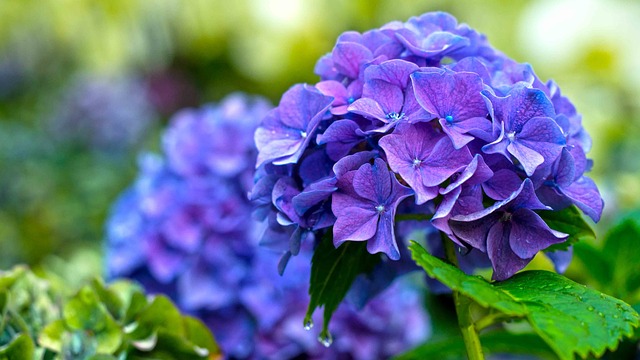Expert Lawn Care Guide: Mastering Healthy Turf Management Year-Round
Effective lawn care and landscaping hinge on a year-round approach that prioritizes sustainable practices while maintaining aesthetic appeal. Key strategies include species-specific fertilization based on soil analysis to ensure optimal grass h…….

Effective lawn care and landscaping hinge on a year-round approach that prioritizes sustainable practices while maintaining aesthetic appeal. Key strategies include species-specific fertilization based on soil analysis to ensure optimal grass health, integrated pest management (IPM) for managing pests without excessive pesticide use, and regular aeration and overseeding to enhance turf resilience. Seasonal maintenance considers local climate and pest challenges, employing proactive measures like pre-emergent herbicides for weed control and selecting the right herbicides when weeds emerge. Water conservation, native plant integration, and on-site composting are also integral to a sustainable landscaping practice, which aims to create outdoor spaces that are both beautiful and environmentally responsible. By combining these techniques with strategic landscape design, lawn care and landscaping professionals can deliver healthy, vibrant turf that thrives through the seasons while supporting ecological balance and reducing environmental impact.
lawn care and landscaping professionals play a pivotal role in maintaining healthy, lush green spaces. This article delves into the essentials of turf management, starting with the fundamentals of lawn maintenance and progressing through seasonal strategies, weed control, soil health, pest management, and advanced landscaping techniques. Each section offers insights to ensure your lawn not only thrives but also contributes to the overall sustainability and year-round aesthetics of your property. Whether you’re a seasoned gardener or a novice looking to enhance your outdoor space, these expert guidelines will help you achieve a vibrant, resilient turf that stands out in any neighborhood.
- Understanding the Fundamentals of Healthy Lawn Maintenance
- Seasonal Lawn Care Strategies for Optimal Growth
- Effective Weed Control and Eradication Techniques
- Soil Analysis and Fertilization: The Cornerstones of Vibrant Turf
- Integrated Pest Management in Residential Lawn Care
- Advanced Landscaping Techniques for Year-Round Aesthetics and Sustainability
Understanding the Fundamentals of Healthy Lawn Maintenance

Engaging in lawn care and landscaping requires a comprehensive understanding of the fundamental practices that contribute to maintaining a healthy and vibrant lawn. A key aspect of this involves consistent mowing at the correct height for the grass species, which encourages root growth and helps to prevent weeds. Fertilization is another critical element; applying the right type and amount of fertilizer at appropriate times throughout the growing season ensures that your lawn receives essential nutrients for optimal growth. Additionally, proper irrigation practices are crucial to maintain soil moisture levels without causing runoff or waste. Understanding the specific needs of the turfgrass varieties in your region is vital; different types of grasses have varying requirements for sunlight, water, and nutrients.
A well-maintained lawn not only enhances the aesthetic appeal of a property but also plays a significant role in environmental conservation. Integrated pest management strategies should be employed to manage insects and diseases naturally, minimizing the reliance on chemical controls. Aeration and overseeding are practices that should be incorporated into your lawn care routine to improve soil structure, enhance root development, and thicken the turf, making it more resilient to foot traffic and environmental stressors. Regular inspection and proactive maintenance can prevent minor issues from escalating, ensuring a healthy and sustainable landscape throughout the seasons. Lawn care and landscaping professionals with expertise in these areas can provide tailored advice and services to help you achieve a lush, green lawn that stands as a testament to meticulous care and attention to detail.
Seasonal Lawn Care Strategies for Optimal Growth

A well-maintained lawn is a hallmark of meticulous landscaping, and seasonal lawn care strategies are essential for fostering optimal growth throughout the year. In spring, homeowners should focus on raking away thatch and debris to improve air circulation and sunlight penetration, which are crucial for healthy grass development. Aerating the soil during this season also aids in alleviating soil compaction, allowing water and nutrients to reach the grass roots more effectively. Fertilization should be tailored to the type of grass present, as different species have varying nutritional needs.
As summer progresses, lawn care shifts to managing heat stress and pest control. Watering deeply but infrequently encourages deep root growth, making the turf more resilient. Applying a weed preventer can help maintain a lush, green lawn by inhibiting the germination of unwanted plants. Regular mowing at the recommended height for the grass type ensures a healthy lawn canopy and reduces the risk of disease and pest infestation. Transitioning into fall, lawn care should focus on preparing the grass for winter dormancy. This includes reducing fertilization to prevent late-season growth that could be damaged by frost, and continuing to mow at lower heights to help the grass store energy for the coming cold months. Lastly, in autumn and early winter, it’s important to overseed bare spots to thicken the lawn and repair any damage from summer pests or diseases. By following these seasonal strategies, landscaping professionals can ensure a vibrant, resilient lawn that stands as a testament to expert lawn care throughout the year.
Effective Weed Control and Eradication Techniques

Effective weed control and eradication are pivotal components of comprehensive lawn care and landscaping strategies. To maintain a lush, healthy turf, it’s imperative to implement a proactive approach that targets weeds before they become established. A robust lawn care program typically begins with proper mowing practices, as consistently cutting grass at the correct height can shade the soil and reduce weed germination. Additionally, fertilization tailored to local soil types and climate conditions promotes vigorous turf growth, making it more competitive against weeds. Pre-emergent herbicides are a cornerstone in preempting weed infestations by preventing seed germination, while post-emergent treatments effectively manage established weeds. It’s crucial to select the right type of herbicide for the specific weed species present and to apply it correctly to ensure efficacy without harming the desirable turfgrass. Integrated pest management (IPM) practices further enhance weed control by combining chemical, cultural, and biological methods to create a resilient, healthy lawn. Landscaping professionals adept in these techniques can diagnose weed issues, recommend appropriate maintenance schedules, and deliver tailored solutions that contribute to the overall aesthetic and health of the landscape. By understanding the life cycle of weeds and employing targeted strategies, lawn care and landscaping experts can successfully manage and eradicate unwanted vegetation, ensuring a beautiful and consistent turf surface throughout the seasons.
Soil Analysis and Fertilization: The Cornerstones of Vibrant Turf

Engaging in regular soil analysis is a fundamental aspect of effective lawn care and landscaping practices, serving as the bedrock for robust turf management. Soil testing provides valuable insights into the nutrient levels, pH balance, and composition of the soil, which are critical factors influencing grass health and growth. Understanding the soil’s makeup allows for targeted fertilization strategies that address specific deficiencies or imbalances, ensuring that the right types and amounts of nutrients are applied to support a lush, green lawn. Expert turf managers understand that the application of fertilizers must be tailored to the results of soil tests, rather than relying on a one-size-fits-all approach. This precision in fertilization not only promotes optimal grass growth but also minimizes the potential for nutrient runoff and environmental impact, making it a responsible choice for those prioritizing lawn care and landscaping with ecological stewardship in mind.
Fertilization is the cornerstone of sustained turf vigor and aesthetic appeal within the realm of lawn care and landscaping. A well-thought-out fertilization program, informed by accurate soil analysis, ensures that grass receives all necessary nutrients throughout different seasons and growth stages. Professionals in the field emphasize the importance of a balanced approach to fertilization, which includes macro-nutrients like nitrogen, phosphorus, and potassium, as well as micronutrients that are essential for turf health. By adhering to a consistent and scientifically grounded fertilization schedule, landscaping professionals can maintain the integrity of the turf, enhance its resilience against pests and diseases, and contribute to a visually appealing outdoor space that stands the test of time.
Integrated Pest Management in Residential Lawn Care

Integrated Pest Management, commonly known as IPM, plays a pivotal role in residential lawn care, offering a strategic approach to managing insects and plant diseases. By prioritizing long-term prevention and control, this method ensures that turf grasses remain healthy and vibrant. Landscaping professionals employ IPM techniques to monitor the lawn for signs of pests or diseases, identifying them at an early stage when they are more easily managed. This proactive approach avoids the overuse of broad-spectrum pesticides, which can harm beneficial insects and disrupt the ecological balance within the lawn environment. Instead, IPM in residential lawn care focuses on a combination of cultural practices, biological controls, and targeted treatments to maintain turf health without resorting to harsh chemicals. This not only protects the family, pets, and the surrounding ecosystem but also ensures that the lawn remains a lush, green space throughout the seasons. Landscaping experts who specialize in IPM are adept at tailoring their strategies to the unique conditions of each lawn, leveraging their knowledge of turf species, local pest pressures, and environmental factors to deliver effective, sustainable solutions for residential lawn care.
Advanced Landscaping Techniques for Year-Round Aesthetics and Sustainability

In the realm of lawn care and landscaping, achieving year-round aesthetics and sustainability requires a blend of advanced techniques and strategic planning. Professionals in the field employ a variety of eco-conscious practices to maintain healthy turf and vibrant plant life throughout all seasons. For instance, integrated pest management (IPM) is a method that focuses on long-term prevention or suppression of pests by combining biological, cultural, physical, and chemical tools in an effective and expected way. This approach minimizes the need for broad-spectrum pesticides, which can be harmful to the environment and beneficial insects. Additionally, the use of aeration and overseeding techniques helps to enhance soil health and promote a thick, resilient turf that can better compete with weeds. These practices not only contribute to the lawn’s visual appeal but also support its ecological function as a habitat for various species.
Sustainable landscaping involves more than just maintaining the health of the grass; it encompasses the conservation of water, the reduction of chemical fertilizer and pesticide use, and the integration of native plants that require less maintenance and are adapted to local conditions. Composting organic waste on-site not only reduces waste but also provides a nutrient-rich medium for plant growth. Furthermore, the strategic placement of trees, shrubs, and ground covers can create natural barriers to wind and sunlight, reducing the need for chemical interventions while providing aesthetic interest year-round. By prioritizing these sustainable practices, lawn care and landscaping professionals ensure that outdoor spaces are not only beautiful but also environmentally responsible and resilient against the challenges of varying seasons.
lawn care and landscaping professionals play a pivotal role in maintaining verdant, resilient turf. By mastering the fundamentals of healthy lawn maintenance and employing seasonal strategies, turf managers can ensure optimal growth. Effective weed control, informed by thorough soil analysis and tailored fertilization plans, forms the bedrock of vibrant turf. Integrated pest management further safeguards against damage, while advanced landscaping techniques contribute to both year-round aesthetics and environmental sustainability. Expertise in these areas elevates lawn care and landscaping from a routine task to a science-backed art form. Homeowners and professionals alike can reap the benefits of a well-maintained landscape, which not only enhances curb appeal but also fosters a healthier ecosystem.







